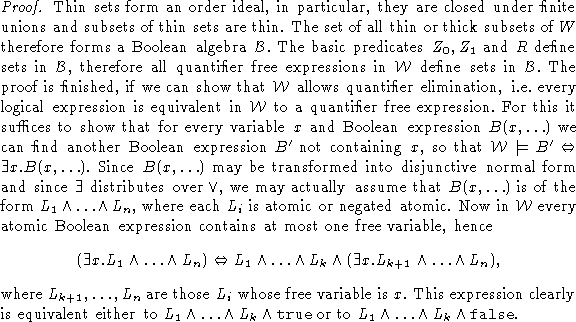M. Wand [6] has presented a data structure ![]() over which the Hoare calculus is
incomplete. From our earlier remarks it follows that
over which the Hoare calculus is
incomplete. From our earlier remarks it follows that ![]() is not expressive.
The signature of
is not expressive.
The signature of ![]() extends the Boolean signature by
extends the Boolean signature by
![]()
and the operations are defined on the set ![]() via
via


Wand considers the following program ![]() over
over ![]() :
:
![]()
It is obvious that ![]() , which is the upper
copy of
, which is the upper
copy of ![]() in the figure, so in particular the Hoare triple
in the figure, so in particular the Hoare triple
![]() is valid.
is valid.
Assuming that this can be proven in the Hoare calculus, we submit the annotated program to NPPV.
We have to supply the while-loop with an invariant, which, if it exists, must be a logical
expression with at most ![]() as free variable. NPPV allows us to enter such an ``unknown''
expression, so we enter
as free variable. NPPV allows us to enter such an ``unknown''
expression, so we enter
{ R(x) }
WHILE not (Z0(x) or Z1(x)) DO { I(x) }
x := g(x)
{ Z0(x) }
NPPV generates the following verification conditions
R(x) => I(x)
I(x) and not (Z0(x) or Z1(x)) => I(g(x))
I(x) and Z1(x) => Z0(x)
from which we conclude that I(x) describes the same set as before, namely
Using the Beth-definability theorem[2], Wand shows that the above set is not definable, contradicting the existence of an expression I(x). We shall now give an elementary proof of this result.
![]()
![]()

![]()
![]()